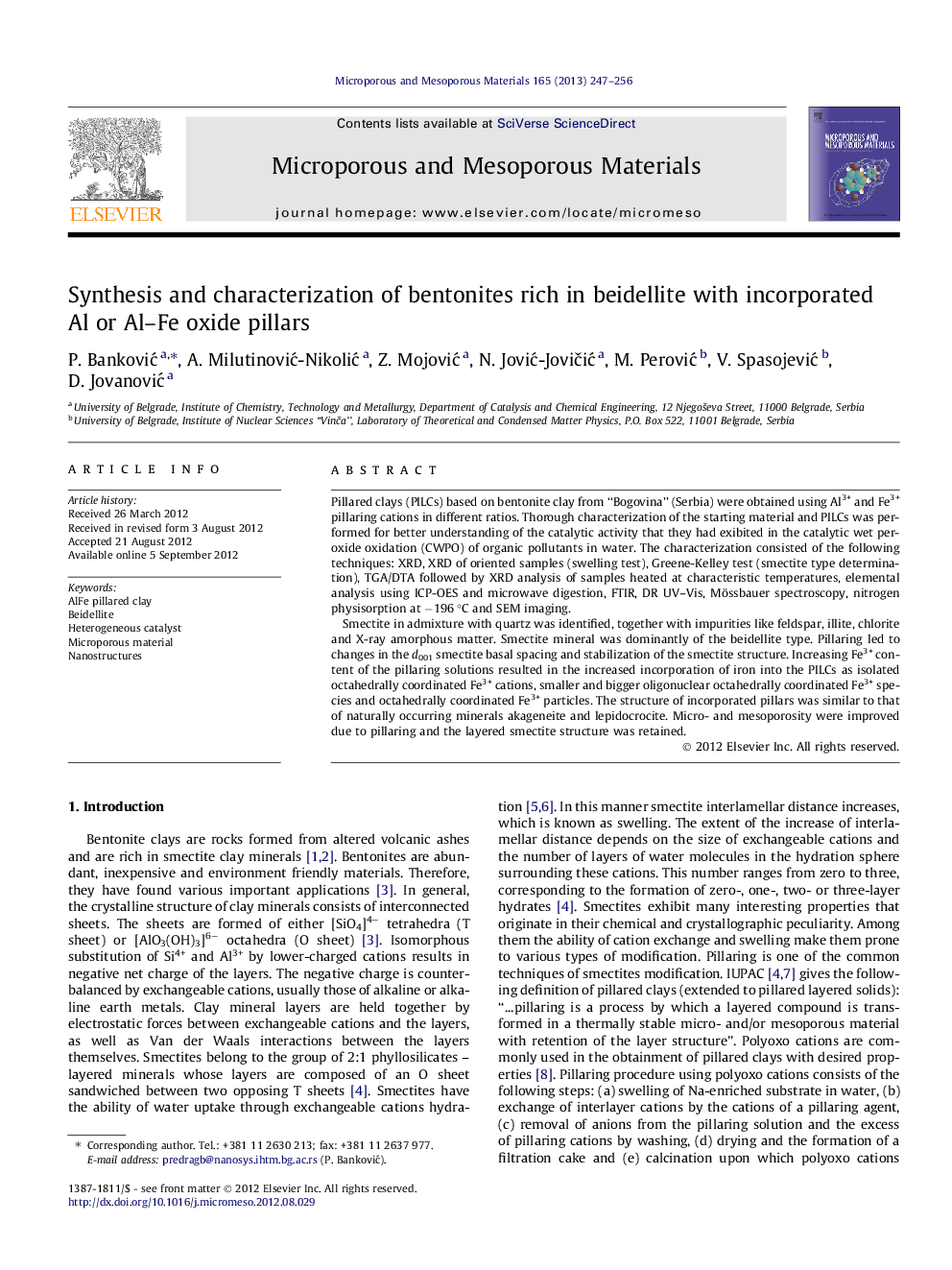| Article ID | Journal | Published Year | Pages | File Type |
|---|---|---|---|---|
| 73938 | Microporous and Mesoporous Materials | 2013 | 10 Pages |
Pillared clays (PILCs) based on bentonite clay from “Bogovina” (Serbia) were obtained using Al3+ and Fe3+ pillaring cations in different ratios. Thorough characterization of the starting material and PILCs was performed for better understanding of the catalytic activity that they had exibited in the catalytic wet peroxide oxidation (CWPO) of organic pollutants in water. The characterization consisted of the following techniques: XRD, XRD of oriented samples (swelling test), Greene-Kelley test (smectite type determination), TGA/DTA followed by XRD analysis of samples heated at characteristic temperatures, elemental analysis using ICP-OES and microwave digestion, FTIR, DR UV–Vis, Mössbauer spectroscopy, nitrogen physisorption at −196 °C and SEM imaging.Smectite in admixture with quartz was identified, together with impurities like feldspar, illite, chlorite and X-ray amorphous matter. Smectite mineral was dominantly of the beidellite type. Pillaring led to changes in the d001 smectite basal spacing and stabilization of the smectite structure. Increasing Fe3+ content of the pillaring solutions resulted in the increased incorporation of iron into the PILCs as isolated octahedrally coordinated Fe3+ cations, smaller and bigger oligonuclear octahedrally coordinated Fe3+ species and octahedrally coordinated Fe3+ particles. The structure of incorporated pillars was similar to that of naturally occurring minerals akageneite and lepidocrocite. Micro- and mesoporosity were improved due to pillaring and the layered smectite structure was retained.
Graphical abstractFigure optionsDownload full-size imageDownload as PowerPoint slideHighlights► AlFe pillared clays (PILCs) differing in Fe/Al ratio were characterized. ► Beidellite was confirmed to be the prevalent type of smectite within the clay. ► Single type of mixed pillars (Al13−xFex) occurred only in the PILCs lower in Fe. ► Fe-richer PILCs were richer in greater clusters of octahedrally coordinated Fe3+. ► The structure of pillars resembled those of minerals akageneite or lepidocrocite.
